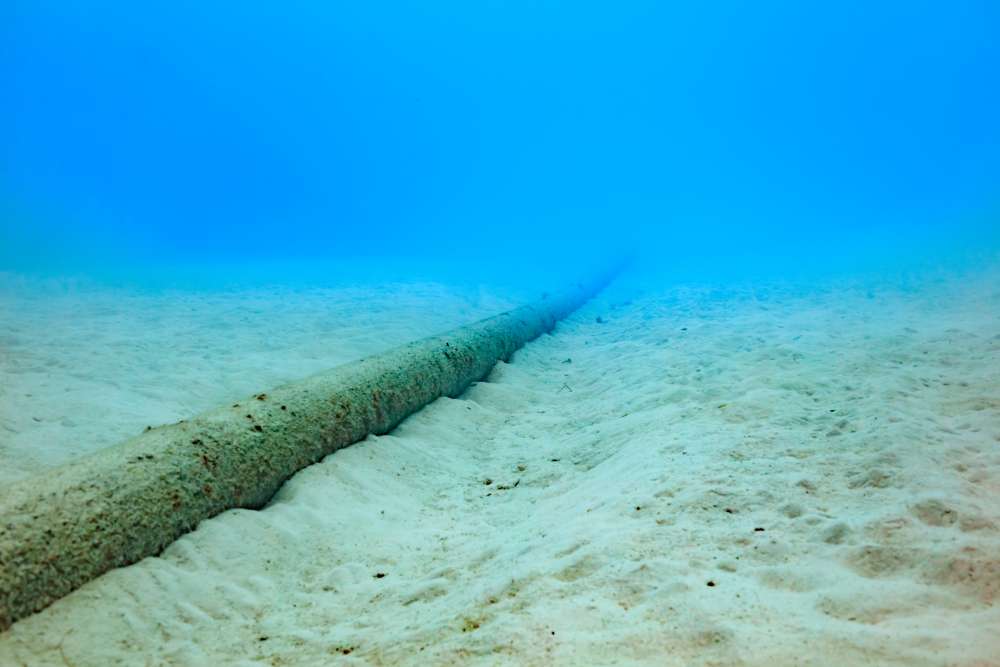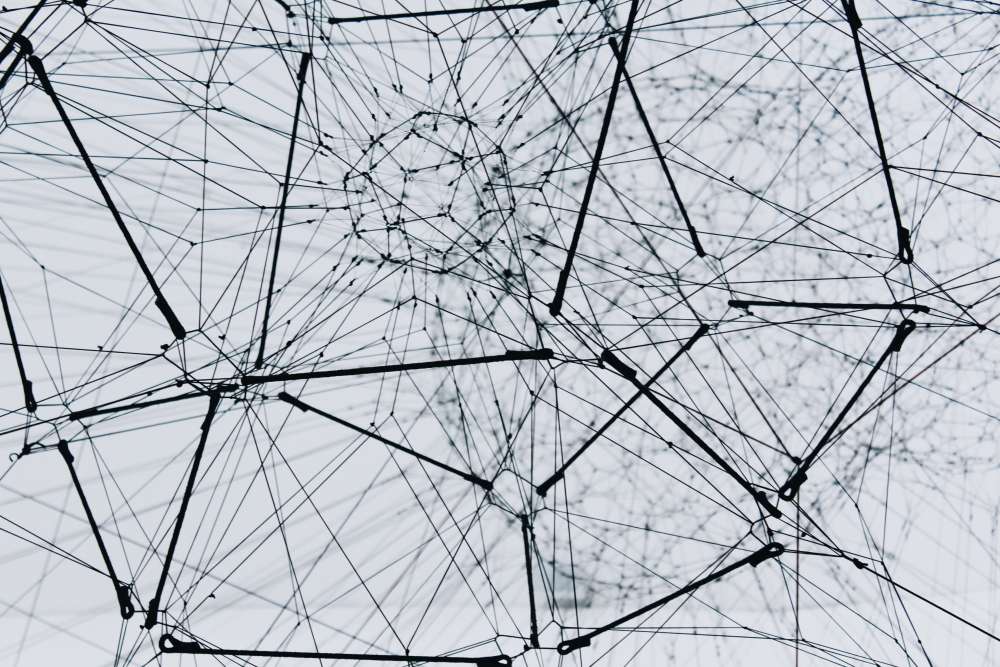Securing the Deep: Undersea Cables and National Security
Undersea cables comprise almost all of the world’s digital infrastructure – and their disruption could have devastating consequences. How can Germany better protect this critical infrastructure?
Why are undersea fiber optic cables of strategic significance to German and European foreign policy?
It would be hard to overstate how integral the network of undersea fiber optic cables is to our daily lives: it comprises almost all of the world’s digital infrastructure. Everything from everyday text messaging to high-stakes financial trading relies on these undersea cables, and their potential disruption could have severe consequences for global communications and the world economy. In 2010, researchers estimated that an undersea cable breakage could result in more than $1.5 million in revenue loss per hour – and I would speculate that this number has only risen since then.
Outside of civilian usage, the network is also crucial for national security. High-stakes communications – including coordinating diplomatic missions, security operations and intelligence gathering – rely on the undersea cable network. Network disruption, or even the threat of disruption, has enormous and potentially dangerous implications at the individual, state and regional levels. In light of Russia’s war on Ukraine, this security dimension has particular salience for Europe and Germany as a leading partner in NATO. Further, the undersea cable network is a crucial component of the technology war between the US and China: both countries are racing to construct and control more cross-continental undersea cables. Washington’s efforts to curb the influence of Chinese provider Huawei have also extended to Huawei Marine Networks Co Ltd, a subsidiary company that has become the world’s fastest-growing manufacturer and installer of undersea cables.
Germany’s approach to this critical infrastructure will have ramifications beyond Europe. The global digital divide remains a central issue: many German partners – including island nations that often depend on a single cable or countries in the Global South that have historically and intentionally been excluded from technology infrastructure development – need more redundancy in their connectivity and more access to repair crews. As Germany continues to shape its national strategy on undersea cables, it has a responsibility to consider these inequalities.
» Everything from everyday text messaging to high-stakes financial trading relies on these undersea cables, and their potential disruption could have severe consequences for global communications and the world economy. «
Where do you see the primary vulnerabilities in the undersea fiber optic cable network?
By its very nature, the undersea cable network is a structurally vulnerable system. The cables cover long stretches of water, including the High Seas, where it is impossible to monitor and protect every inch of the network at all times. There is also the challenge of ‘multiple invisibility’ for underwater infrastructures. Jonas Franken writes compellingly about this phenomenon in the context of maritime KRITIS, explaining why vital infrastructures vary in levels of protection and how ‘invisible’ infrastructures in the ocean like the cable network are liable to be neglected by policymakers.
Undersea cables are also easy to damage even without sophisticated tactics, making them vulnerable to intentional and unintentional damage. In terms of prevalence, the highest risk for undersea internet cables occurs through unintentional human interference, including fishing or shipping vessels that unknowingly sever or damage existing cables through dredging or anchoring. According to research commissioned by the European Parliament’s Subcommittee on Security and Defence, a little over half of cable disruptions occur due to these unintentional actions.
Since interference does not require technologically sophisticated capabilities, damage to undersea cable falls within a challenging gray area, especially when it occurs in geopolitically charged regions. As a recent example, the two undersea cables connecting the Taiwanese island of Matsu to the global internet were severed in February 2023. The Taiwanese National Communications Commission (NCC) claimed that a Chinese fishing vessel likely severed the first cable and a Chinese cargo ship damaged the second. While the NCC has not claimed that the severing was intentional, this incident illustrates the complexities of undersea cable security. Just as civil vessels can unintentionally damage cables, these same vessels can be easily utilized to commit intentional, harmful acts. Understanding this ambiguity around intention and attribution is essential for crafting a sound security strategy.
How should Germany’s security policy address these vulnerabilities?
To tackle the vulnerabilities inherent in the undersea cable network, improving mechanisms for reporting accidental damage will be imperative. Addressing this core security risk requires establishing who bears responsibility for cable damage and, in the event that such interference is accidental, proactively communicating with relevant state actors. In a heightened security environment, the potential for escalation runs high. Without clearly established communication channels and reporting, an incident could be misconstrued as an intentional disruption.
Regardless of the intention, cable breakages are common. As of 2017, over 100 breakages were reported yearly. Global zones and cooperative agreements dictate when and how undersea cables are maintained: individual countries have differing numbers of ships and equipment for repairing these cables, which can vary due to fleet upgrades and budget allocations. For Europe, the Atlantic Cable Maintenance & Repair Agreement and the Mediterranean Cable Maintenance Agreement cover the vast Atlantic, Mediterranean, Black, and Red Seas – with only three of their repair ships stationed in the European Union. Currently, the number of Germany’s naval assets dedicated to undersea cable repair is not on public record. Still, given the vast maritime area vital to the European Union, it is safe to assume that Berlin’s current repair capacities are limited. Investing in a more robust repair fleet is essential to ensuring reliable communications and both German and European security.
Addressing the gaps in governance should be high on Germany’s priority list. While the United Nations Convention on the Law of the Sea (UNCLOS) provides a legal framework for the use of the world’s oceans, experts widely view it as outdated when it comes to the regulatory and security complexity of undersea cables. Its lack of enforcement mechanisms and regional specificity make it only a starting point for effective governance. To effectively address challenges in the undersea cable network, more robust regional and subnational governance mechanisms are desperately needed.
Another integral element to confronting these security risks is working closely with NATO on establishing a coordinated European strategy: last November, German Chancellor Olaf Scholz and Norwegian Prime Minister Jonas Gahr Store announced that they would push NATO to create an informal initiative to enhance the security of the undersea infrastructure. And things have moved pretty quickly on this front. In February, NATO announced the creation of the Critical Undersea Infrastructure Coordination Cell, which will be led by Lieutenant General Hans-Werner Wiermann. This is a necessary first step, but its agenda remains ambiguous and not enough time has passed to determine its full scope or impact.
» To tackle the vulnerabilities inherent in the undersea cable network, improving mechanisms for reporting accidental damage will be imperative. «
Currently, a consortium of American, Finnish and Japanese companies are building a new route for undersea fiber optic cables traversing the Arctic Circle. The new cables promise a faster connection between Asia and Europe. What does this project tell us about the future of maintaining the security of these critical infrastructures?
This project illustrates several emerging trends and invites new questions about international cooperation and environmental factors.
First, it shows the impact of increased demands for strategic connectivity. Technologically, setting up internet infrastructure in the Arctic offers many advantages: the connection itself is better due to the Earth’s reduced curvature at the pole, making connectivity between Europe, North America and Asia both closer and faster. With increasing global demand for more and faster connectivity, new cable routes such as in the Arctic will likely emerge with their own specific regional security dimensions. This project underscores how enhanced security measures and more precise global and regional governing mechanisms are becoming all the more important to ensuring the security of the critical infrastructure as the network grows.
Second, the project demonstrates the importance of international coordination and cooperation. As undersea internet cables cross multiple jurisdictions, the stakeholders – including states, cable operators, technology providers, and telecommunications companies – will be required to collaborate more to address the challenges presented by the growing network. The Arctic Circle project traverses a geopolitically charged area and requires extensive dialogue between all actors involved. With the undersea cable network growing in political salience in Europe, we can expect increased dialogue between the European Union, the United Nations and the International Cable Protection Committee around coordinating regional responses for undersea cable security.
The project also highlights environmental considerations in the undersea cable network. The Arctic region poses unique vulnerabilities due to its harsh environmental conditions and fragile ecosystems. The climate crisis has already played a significant role for the undersea cable network: this route is partially made possible due to shrinking ice coverage. Understanding how to mitigate potentially negative environmental impacts, as well as how to navigate a changing physical landscape, will increasingly come into play as climate change impacts the world’s oceans. Further, storms and extreme weather events, ocean acidification, and temperature change all risk decreasing the lifespan of undersea cables. The case of the Arctic suggests a future security and governance regime that likely includes more provisions around environmental regulations, environmental monitoring and risk assessment
Amanda Kraley
Research Associate, Global Public Policy Institute
Weiterlesen

Kaum geschützt und vernachlässigt: Deutschlands Untersee-KRITIS
Kritische Infrastrukturen am Seegrund garantieren unsere Energieversorgung und Möglichkeit zu kommunizieren. Warum schützt Deutschland seine maritime KRITIS also nicht besser?

“Play the Game or Be Played”: Building Tech into Germany’s National Security Strategy
Technology is coming for international relations, whether nations are ready or not – and so far, Germany is not. Why Berlin needs to start viewing its national security through a tech policy lens.

